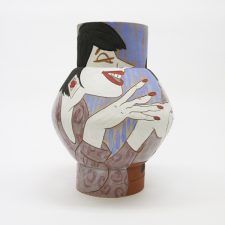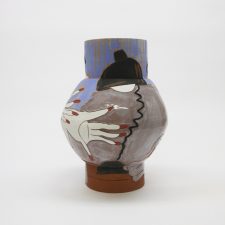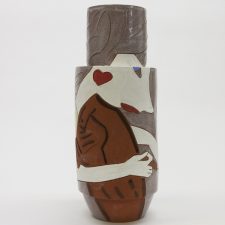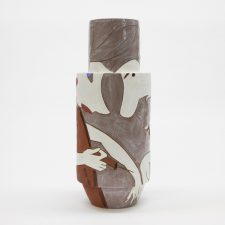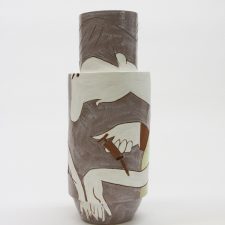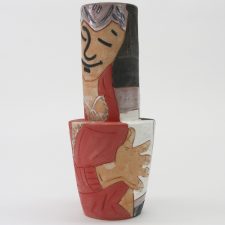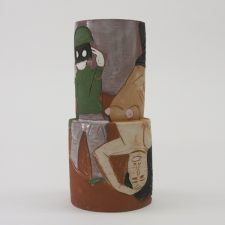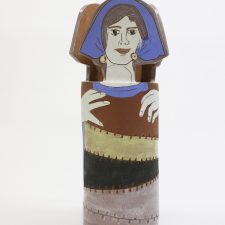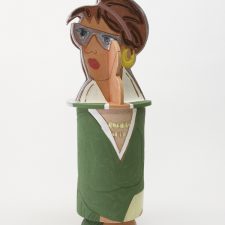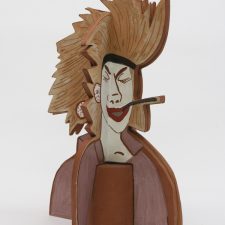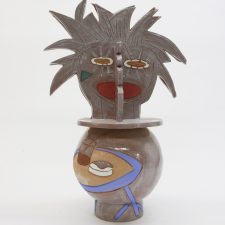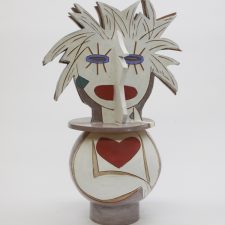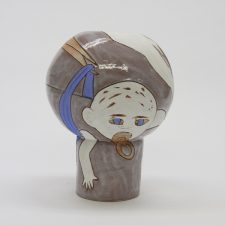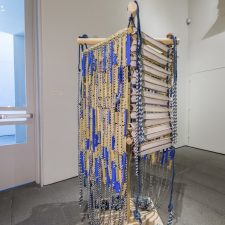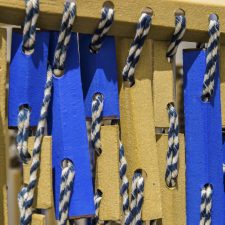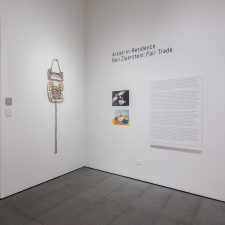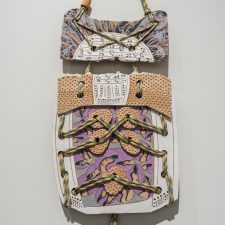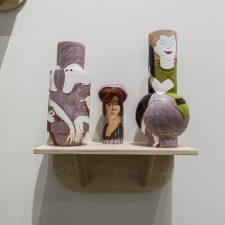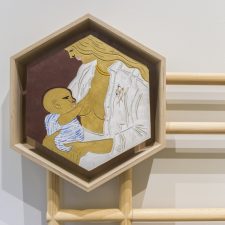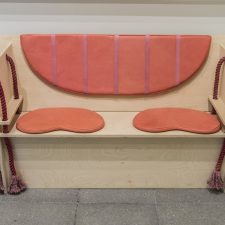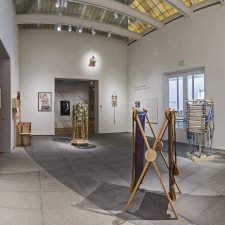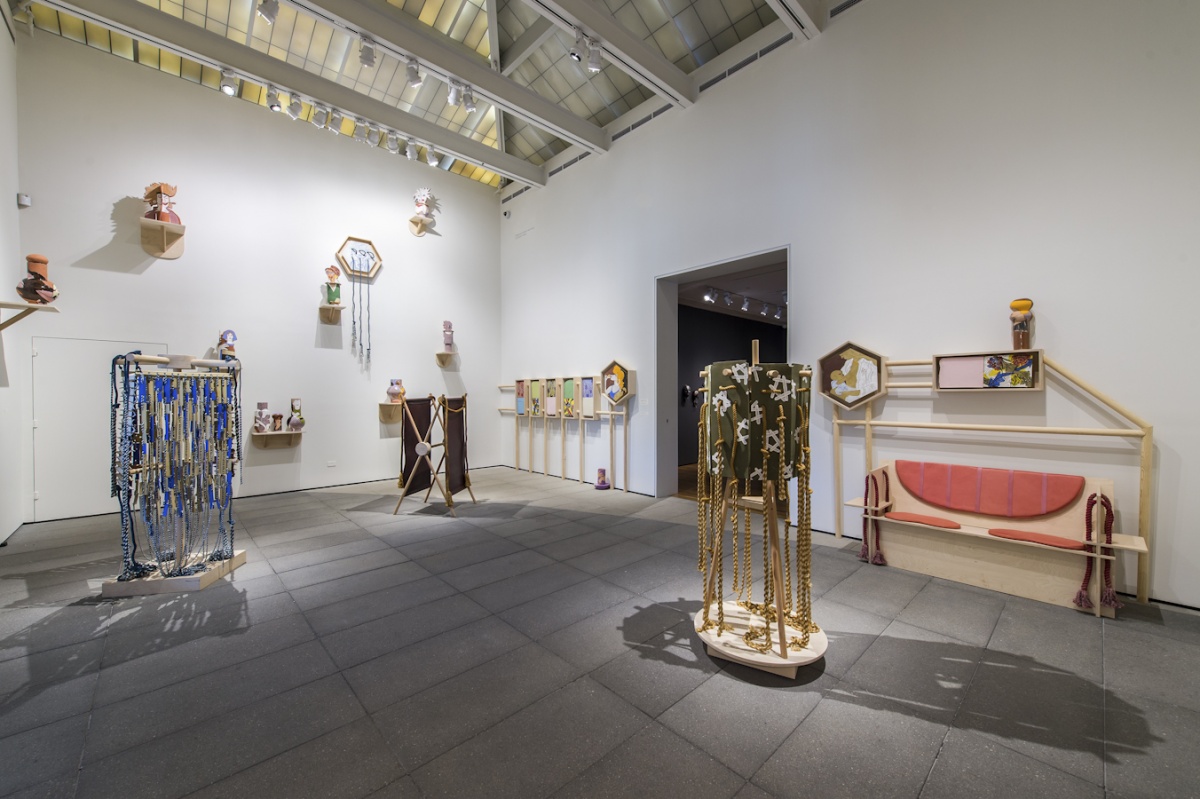
Fair Trade
Artist-in-Residence: Bari Ziperstein
Art, Design, & Architecture Museum // UC Santa Barbara
Join us on January 27, 2017 @ 5:30pm for the opening reception
February 4 @ 2pm: Walk-through & Conversation with Bari Ziperstein and Prof. Jenni Sorkin
February 23 @ 5:30pm: Film Screening, Cold War Era Short Films and Home Movies
Bari Ziperstein has built an artistic practice at the crossroads of traditional craft, feminist critique, conceptual theory and historical research. Although trained as a painter and ceramicist, Ziperstein works in a variety of mediums and methods, choosing the most appropriate ones to fully articulate her projects. Over the past six years she has developed a body of work, Decorative Protection, that examines the myriad conflicting images of the female form. This work investigates the prevailing contradictory (and controlling) societal expectations of women to be both seductive and appealing, in manner and appearance but also inaccessible and safeguarded. These concepts acted as the kernel of inspiration for her installation, Fair Trade where she employs ceramics, leather embossing, fiber arts, and woodworking.
The new works in this installation explore Ziperstein’s ideas of gender and control through references to Japanese Samurai armor and Soviet Union propaganda. During visits to the Los Angeles County Museum of Art and a residency at the Wende Museum (Culver City, CA), a repository of Cold War artifacts, she was fascinated to note that although separated by time and space, both cultures created tangible elements for defending a specific gender from perceived dangers. In Japan, warrior noblemen donned durable, finely-crafted shields, chain mail and helmets to physically protect them from injury in battle. In the Soviet Union, on the other hand, posters directed at women (some of which are on view here), discouraged socially unacceptable conduct and dress. This Cold War, government-sanctioned propaganda was in essence geared towards protecting women from themselves and the choices they might make, even the manner in which they might dress. The contrast between these two methods of safeguarding citizenry—one physical and self-determined and the other metaphorical and dictated—emphasized for Ziperstein the stark level of control still directed at women today. This is especially still the case in relation to women’s behavior and dress, where studies show meekness in women is valued over assertiveness and prescribed standards of beauty are imposed through mass media.
These two different approaches to “protection” are on view in the artist’s own trade show booth. She modeled the furnishings and arrangement on illustrated plans for Soviet Russian public information displays and industrial fairs the artist found in the Wende. Instead of installating industrial goods, Ziperstein shows her series of ceramic vessels and panels many of which feature imagery of different womens’ body parts—heads, legs and hands—all derived from the Soviet Union propaganda posters. She particularly highlights the unseemly indicators of pictured ladies such as long, painted nails, fishnet stockings, garish makeup, and mussed hair. References to Samurai armor can also be found, such as the artist’s interpretation of body shields, also decorated with images from the posters, and a free-standing standing leather banner with an embossed representation of chain mail.
These representative works are balanced by more formal, abstract ones. “A poster with graphics demonstrating the correct configuration and techniques used to create a political
display”, features ceramic panels with Cold War patterns from fabrics. It is complemented by long ropes that bind the panels together and fall to the ground. The ropes allow Ziperstein to physically embody her line work and “draw in space,” as she says. “Decorative Protection / Aggressively fight for the fulfillment of the politics of pattern!” can be viewed as an oblique reference to window blinds and windows, the apertures between the public and private realms. For this reason the work serves as a symbolic touchstone of the installation and the consistent societal desire to prescribe expectations of womens’ bodies and minds. Ziperstein’s installation asks the viewer to consider if these expectations are indeed a fair trade.
